Estimated reading time 12 minutes, 34 seconds.
Air Force Global Strike Command’s (AFGSC’s) three bomber types came together for a sharp formation flypast at the culmination of the National Anthem performance at the 55th Super Bowl, which was held at Raymond James Stadium in Tampa, Florida, on Feb. 7. The so-called “trifecta flyover” ahead of the game between the Tampa Bay Buccaneers and the Kansas City Chiefs was led by a B-2 Spirit, which was flanked by a B-1B Lancer and a B-52H Stratofortress.
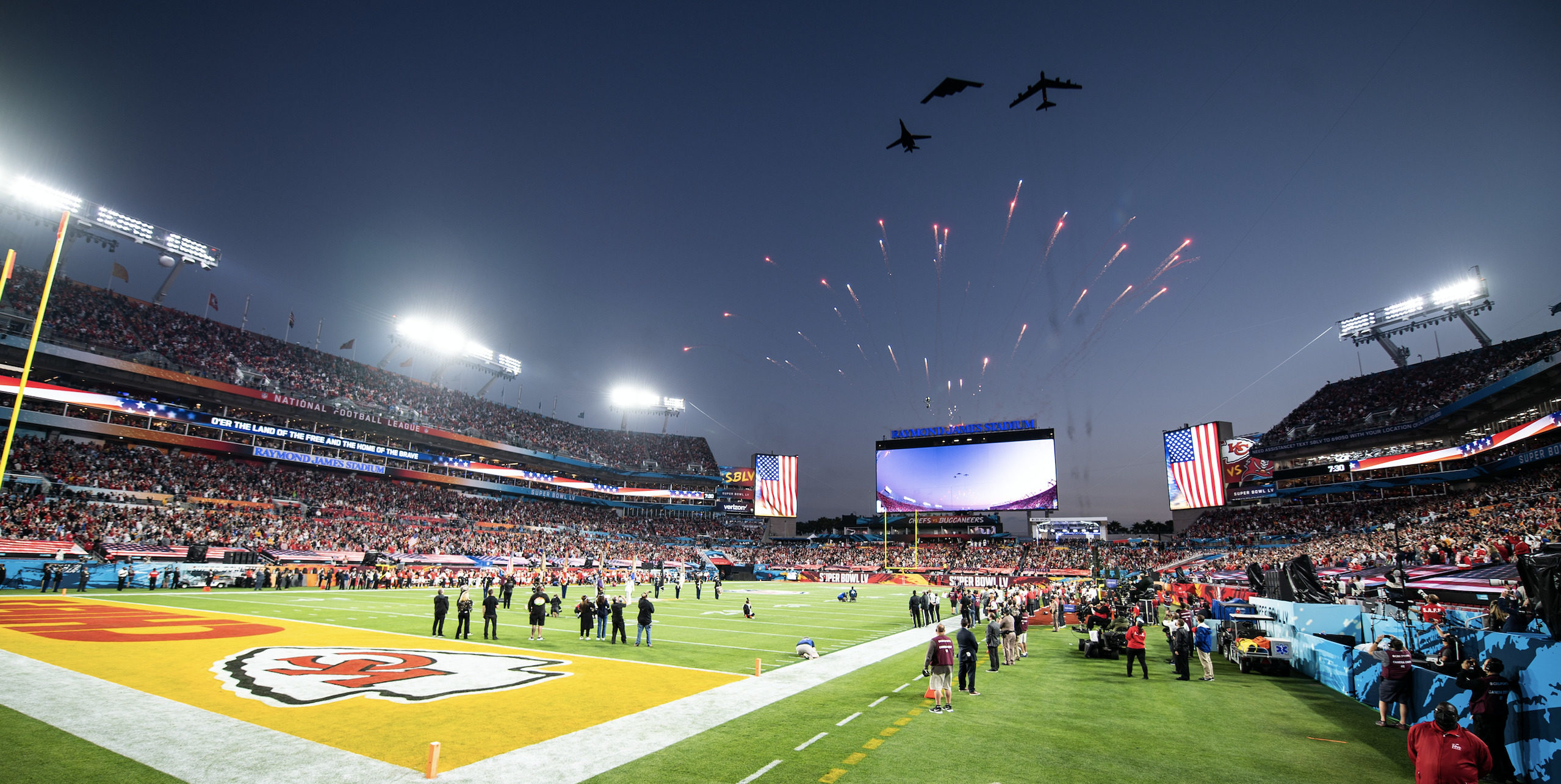
“Supporting this event is a tremendous honor for our command and the U.S. Air Force,” said Gen Tim Ray, Air Force Global Strike Command commander, ahead of the event. “We look forward to this opportunity to showcase the reliability, flexibility and precision of our bomber fleet to the nation during this exciting event.
“To our Americans in harm’s way, know that bombers will be there, anytime, anywhere,” Ray added. “As the only nation in the Western alliance with bombers, we know this flight isn’t just for the Americans watching, but also for our allies and partners around the globe watching this momentous occasion.”
In an official statement, AFGSC said: “The U.S. Air Force performs close to 1,000 flyovers a year, and they serve as a way to showcase the capabilities of our aircraft while also inspiring patriotism and future generations of aviation enthusiasts. These flyovers are done at no additional cost to the taxpayer and serve as time-over-target training for our pilots, aircrew and ground control teams.”
The Super Bowl LV pregame flyover wasn’t the first time these impressive heavy bombers have come together in formation, with media events and a flypast at the Oshkosh AirVenture Airshow in 2017 among other notable occasions. However, it was a first for the combination of the particular units involved this time around. The B-2 Spirit came from the 509th Bomb Wing at Whiteman AFB, Missouri; the B-1B Lancer from the 28th Bomb Wing at Ellsworth AFB, South Dakota; and the B-52H from the 5th Bomb Wing at Minot AFB, North Dakota.
“We are very excited for Team Whiteman to lead the formation Air Force Global Strike Command bombers,” said Col Jeffrey Schreiner, 509th Bomb Wing commander. In fact, the Kansas City Chiefs team maintains a close relationship with Whiteman AFB. “What a tremendous relationship we have with Whiteman AFB,” commented Clark Hunt, the team’s chairman and CEO. “It’s a very strange Super Bowl in that it’s a home game for Tampa, and I know they’re going to have a lot of fans there, but the one thing the Chiefs are going to have is a B-2 flyover.”
Leading the formation for Super Bowl LV was a B-2A piloted by Capt Sarah “Gucci” Kociuba and Maj “Shag” Adair. “We’ve been working for weeks making this plan very precise, so we can go execute it,” Capt Kociuba told Tampa’s Fox 13 News. “So we all brief together, we all plan together and we will make this plan happen. We will rejoin at very low altitude, very high speed and very close together in the Whiskey [airspace in the Gulf of Mexico], we will work out timing and then do the flyover.” It was expected that the B-2 would fly an eight-hour mission overall, combining a number of training events to maximize the value of the sortie.
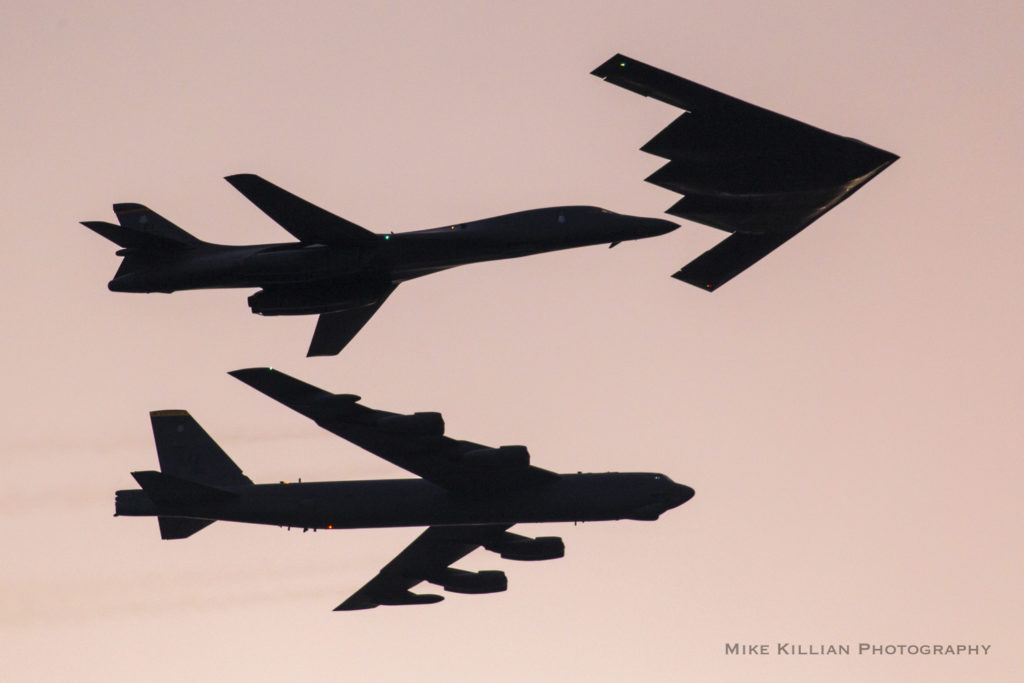
“We’ll get in formation, we will work our timings, which means we are going to figure out when we have to leave [our holding point] to fly over the stadium on time,” commented B-1B pilot for the flypast Capt Abraham “Ghost” Morland, of the 37th Bomb Squadron. According to flight radar tracking data and imagery released by the U.S. Air Force, a pair of each of the bombers was launched for the event, meaning that each primary aircraft had an airborne back-up spare to ensure the required assets would be available when the big moment arrived. The aircraft mustered in the airspace off Tampa, before their push time, with the B-2 leading the formation and using the radio callsign “Drago 51.”
LCol Chris “Nike” McAlear is the chief of the Air Combat Command Aerial Events Branch, and for the Super Bowl served as the ground controller who vectors the aircraft in for the actual flyover. “This flyover took a lot of extra coordination, because we were working with three different Wings at three different bases. Normally, you’re working with one unit who is used to doing these types of flyovers, so it was a new dynamic for us,” said McAlear. “Once we got the final aircrews selected and got the times from the NFL on when the National Anthem would end, I put together a detailed event briefing for the three flying crews.”
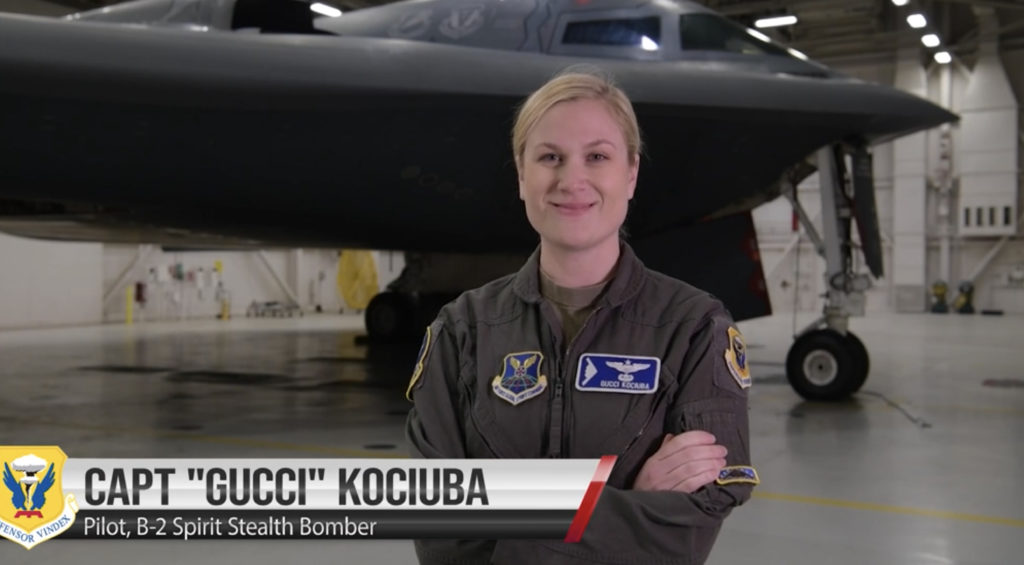
Maj Kendall Smith, Directorate of Operations’ Command Lead, Bomber Force Management, added: “In addition, we had to coordinate with the tanker aircraft at MacDill [AFB] to schedule KC-135s for refueling of the flyover aircraft; so in all, a lot of teamwork. We have contingency plans in place with backups for all three aircraft, so that means a lot of coordination with aircrew and maintainers on the ground.”
Flyovers like this often see fighter aircraft taking part. These can be dynamically maneuvered in the event of issues with the timing of the flyover, such as enforced delays. Bringing together three heavy bombers meant the Super Bowl event had to be very carefully scripted, with little margin for error. The bombers took a long run-in to the stadium, and they passed overhead with split-second accuracy as Jazmine Sullivan and Eric Church completed their rendition of “The Star-Spangled Banner.”
The USAF operates 20 B-2A Spirits. Initially slated to remain in service until 2058, the B-2 could be retired completely by 2032 under AFGSC’s Bomber Vector plan — it is renowned for being massively expensive to maintain, with obsolescence issues plaguing its recent record. The USAF retains 62 B-1B Lancers that are split between two Bomb Wings: the 7th Bomb Wing at Dyess AFB, Texas, and the 28th Bomb Wing at Ellsworth. The B-1 can carry the largest conventional payload of both guided and unguided weapons in the USAF, with testing ongoing regarding the external carriage of weapons. The B-1 was originally slated to remain in service until 2040, however, its retirement is being targeted for 2036. Retiring the B-1 and B-2 early is aimed at saving sufficient funds to cover the cost of base infrastructure upgrades and free up sufficient personnel for the USAF’s new bomber, the B-21 Raider.
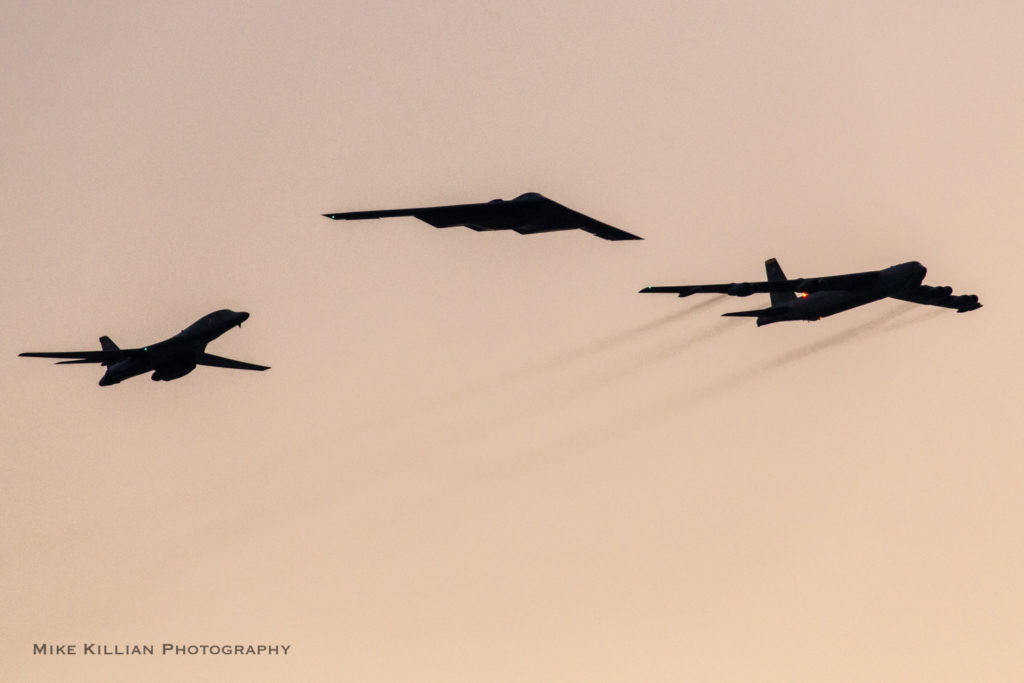
The first Boeing B-52As entered service with the USAF in 1955, and today some 76 B-52Hs remain in service with two bomb wings. Incredibly, the USAF aims to retain 75 B-52Hs until around 2050 to remain operational alongside the new B-21A. The bomber’s weapons payload of more than 70,000 pounds (31,751 kilograms) permits the B-52H to carry the most diverse range of nuclear and conventional weapons of any combat aircraft in the inventory, which will be complemented by brand new hypersonic weapons that are now in development.
As the bomber formation passed overhead Raymond James Stadium, the B-52 spewed out a plume of black smoke from its eight engines as the pilot made delicate throttle inputs to maintain close formation. It served as a reminder of the long-standing requirement to replace the B-52H’s old and inefficient Pratt & Whitney TF33 powerplants. The Commercial Engine Replacement Program (CERP) is a competition that sees Rolls-Royce, General Electric, and Pratt & Whitney offering solutions to replace the B-52’s engines, to help see it through service out to 2050.
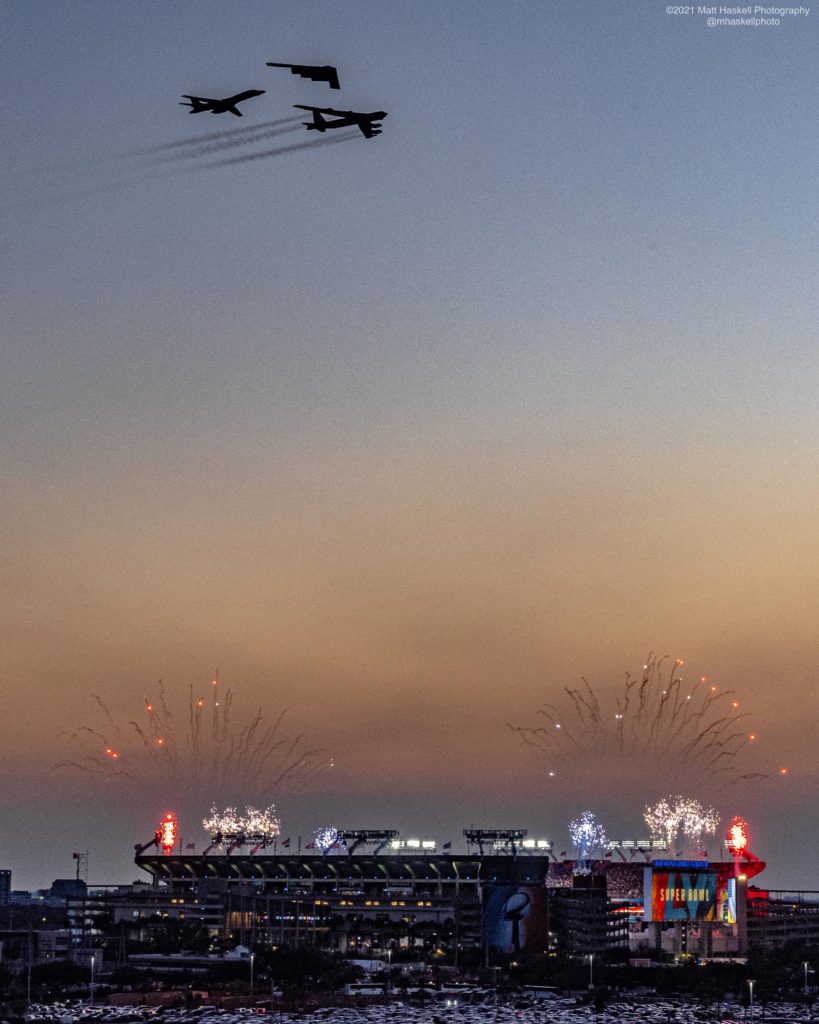
Overall, the Super Bowl bomber flyover was a truly spectacular event at one of the calendar’s most high-profile sporting occasions. An opportunity to showcase air power like this not only serves as critical and useful training for the respective bomber crews, but it also helps to keep the USAF in the spotlight for the public to see on a global scale. The planning, execution and overall effect of the “trifecta flyover” was truly impressive to behold.









I’m kind of disappointed that the article does not note that the model numbers of the trio passing over Super Bowl 55 added up to 55. Not a coincidence, methinks…